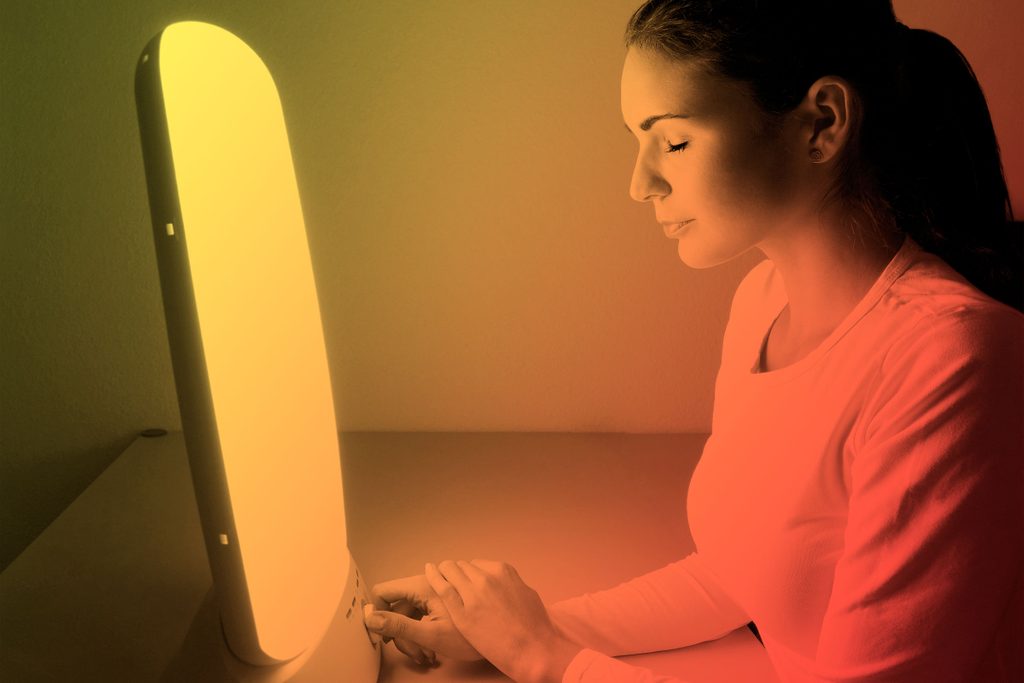Light Therapy: The Benefits of Healing Through Sunlight
Updated: Jul. 25, 2016
A little vitamin D can treat skin conditions and may make you feel happier.

Light is critical for our health and well-being. Two hundred years ago, 75 percent of the population worked outdoors; today, less than 10 percent work in natural light. As the brain needs 5000 lux of sunlight to operate correctly, the 400 lux available in an average office falls short and could contribute to light-related health problems. In addition, skin must be exposed to sunlight in order to produce vitamin D.
MORE: 9 Signs That Could Mean You’re Not Getting Enough Vitamin D
The right amount of light at the correct time of day ensures your body clock operates normally. Modern living has altered nature’s cues, resulting in a dramatic increase in light- deficiency symptoms such as seasonal affective disorder and sleeping problems. Light therapy has been developed as a quick way to restore equilibrium to the body all year round. It is also used to treat certain skin conditions.
How Light Therapy Works
Light therapy can be a valuable tool to rectify a lack of light during the day and therefore restore the balance of melatonin, the hormone that makes us sleepy, and serotonin, a lack of which is associated with depression. A light therapy lightbox mimics daylight without the harmful ultraviolet (UV) rays and timed sessions can be used to treat seasonal affective disorder. It can also fool the body’s internal clock into thinking it is a different time of day, which helps frequent travelers to combat jet lag.
Light therapy that includes UV rays is used to treat skin conditions such as eczema and psoriasis. In this case, your doctor will refer you to a dermatologist.
Having a Light Therapy Treatment
When referred to a dermatologist for light therapy to treat a skin condition, you are likely to need two or three treatments a week. Most people have between 15 and 30 treatments. You might be asked to take a psoralen tablet two hours before your session or take a bath with it added. It might be applied as a cream or gel if the area being treated is small. This is to make your skin more sensitive to UV light. You will have to wear UV protective glasses for 24 hours after taking psoralen as your eyes will be extra sensitive, too.
For the therapy you will be asked to undress, leaving on your underpants. You will be given goggles to wear and might be asked to apply sunscreen to sensitive areas. A test dose of UV light might be given to assess the correct dosage for you. You will then stand in a cabinet containing fluorescent tubes. The first few sessions may only last for a minute, with the time increasing for subsequent sessions.
Safety First
This therapy has few side effects, although some people experience mild headaches, nausea, hyperactivity or itchy skin. If you want to use a lightbox at home, buy one that is certified as a medical device. Consult your doctor before using if you have an eye problem or are taking antidepressants or medication for epilepsy.
Light therapy has not been widely tested during pregnancy or breastfeeding so it is best avoided or used only under medical supervision during these periods.
Where to Find Light Therapy
Your doctor will refer you to a dermatologist, or you can purchase lightboxes from reputable manufacturers online.

Get More Natural Remedies Doctors Approve!
The book Doctors’ Favorite Natural Remedies offers effective ways to treat more than 85 health conditions and evaluates the most commonly used alternative therapies and supplements. Learn more and buy Doctors’ Favorite Natural Remedies here.